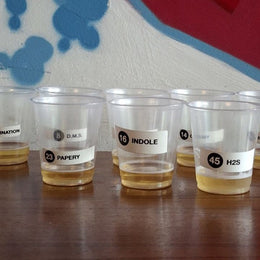
Producers refer to it as “categoría de Tequila” (official category name), aficionados prefer to call it “mixto” (unofficial term). While “mixto” is a lot easier as a reference, the problem with it is that the “mixto” word gives a lot of people the impression of “mixing” something with tequila and I have heard even a producer of only 100% agave tequilas saying that these tequilas are a mix of rum and tequila. Many producers use sugarcane origin sugar for the process which is the most typical base ingredient for rum, so no wonder why people might say this.
However reading through the legislation, it clearly says that tequila is not allowed to be mixed with other alcoholic beverages.


So if the tequila cannot be mixed, what can be mixed then?
The best term to use here is enrichment and they enrich the mosto - the fermenting agave juice.
They basically add sugar, however adding sugar into the mosto has a very different effect vs. adding sugar to the tequila!
The sugars of the mosto are a mix of a min. 51% agave based sugars and a max. 49% non-agave based sugar. The most popular variations are 51-49 and 70-30.

The fermentation is all about converting sugar to alcohol. So more sugar converts to more alcohol right? But why is this beneficial at all?
We have already discussed in the certification course that the “mixto” category exists so that producers can make more tequila from the same amount of agave.

To imagine the process let us visualize it, we only need basic chemistry.
Tequila producers set different alcohol level goals for each stage of the distillation. Before the distillation starts, their ideal alcohol content is around 4-5% abv and then after the first distillation it is around 20% abv and after the second distillation it is usually around 55% abv.

So let’s look what happens if they add sugar into the fermentation tank.
The added sugar would raise the alcohol content, but they want it to keep it at 4-5% abv.
So they add water to reach the desired alcohol level. However if you now compare the quantity of the two fermentation tank, you can see that the “mixto” has twice as much content vs. the 100% agave one.
It will produce more tequila. However if you check the original agave juice content in the two tanks, the one for “mixto” has less of that relative to its total. This is why mixto tequilas have lighter agave flavor as the agave content of a mixto was diluted by the enrichment of sugar in the mosto.
This feature is brought to you by Tequila Stop and the International Tequila Academy.
Tequila Stop aims to share is love for Mexico and its beloved Spirit with fans in Asia Pacific, bringing fans the best that Tequila has to offer, through an extensive catalogue of premium Tequilas and Mezcals straight from the source. Tequila Stop works closely with Mezcaleros across Mexico, and is also partners with the International Tequila Academy.








